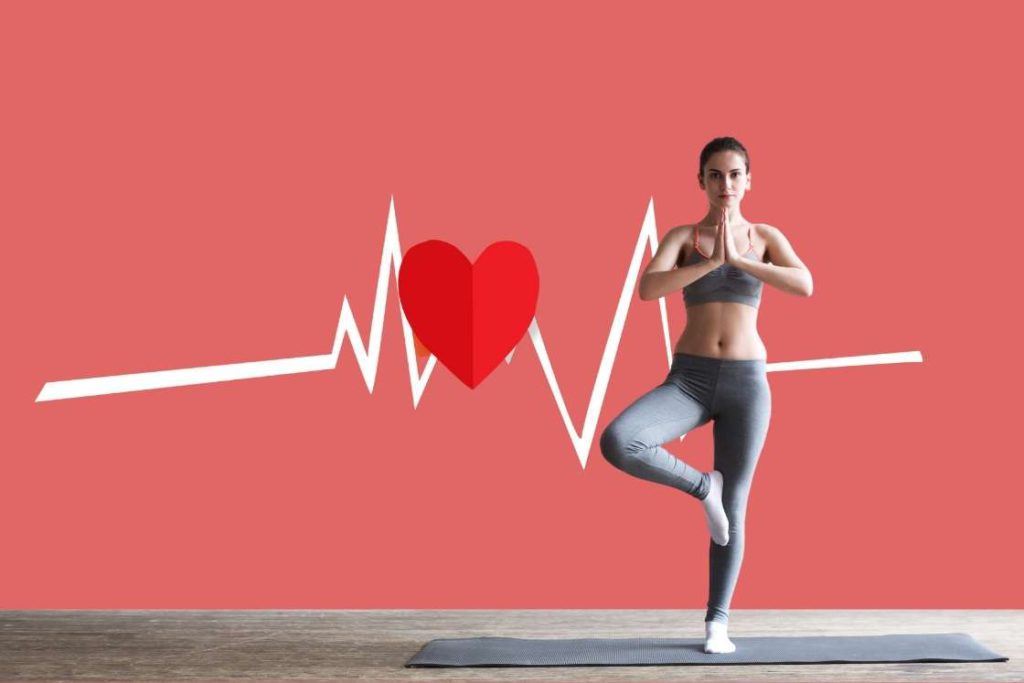
Are you planning to consider Yoga to manage your High blood pressure? If so, then you must have heard of the benefits yoga provides. But how do these benefits work? What does yoga do to your body that reduces blood pressure?
The main issue with high blood pressure is that the pressure of the blood against the blood vessels is too high. The concern with this high pressure is that it can lead to situations like heart attacks and strokes.
Yoga poses reduces the high pressure of blood against the vessels by addressing multiple areas. Yoga will help you maintain an appropriate cardiac output, blood viscosity, and blood volume. Yoga will also reduce the resistance in your arteries.
Yoga on Pressure Regulating Parameters
Blood pressure is a very complicated condition. It involves almost all major mechanisms of the human body. But if one had to pinpoint, some parameters can be linked more directly with the rise and fall of blood pressure.
1. Yoga optimizes Cardiac output
Your cardiac output is the amount of blood your heart pumps each minute. It is determined by your heart rate and the amount of blood pumped with each beat.
Yoga can stimulate the sympathetic and parasympathetic nervous functions of your heartbeat to maintain a normal rate of cardiac output. It can also regulate the production of hormones like thyroid, glucagon, and epinephrine, which too influence your heart rate.
Yoga will also have a significant impact on the volume of blood that goes into your right ventricle. If the blood volume received in your right ventricle is normal, the volume of blood pumped out of your left ventricle will also be normal, which implies normal blood pressure.
2. Yoga can reduce resistance in your Arteries
One of the biggest problems people face that increases blood pressure is high resistance in your Arteries. Yoga will help you keep your Arteries flexible, that will promptly stretch with the beat of your heart to accommodate the blood flow.
Regular practice of yoga will also help you lose the fat build up that presses onto the vessels and increases the resistance within them. Training yoga will also allow you to keep your arteries in their prime health. Which will avoid plaque build up in the artery walls.
3. Yoga regulates your blood velocity
Your blood velocity is the speed at which the blood flows in your Arteries. The higher this speed, the higher will be your blood pressure, and vice-versa.
Your blood velocity is the result of your cardiac output and resistance in your arteries. Yoga can regulate both these parameters to keep your blood velocity in check, consequently your blood pressure remains in check.
4. Yoga impacts your blood viscosity
Viscosity is basically a fluid’s resistance to flow, incase of blood, it is determined by its density. If your blood is flooded with nutrients, it becomes dense. Yoga can help you improve your digestive system and enhance your nutrients absorption.
An improved nutrients absorption will facilitate your body cells to swiftly pick up the protein and fat molecules from your bloodstream, which would have otherwise increased the density, and thus the viscosity.
Yoga exercises also help cleanse your blood of the waste materials released by the body cells. These waste materials, otherwise, would have remained in the bloodstream, increasing the viscosity.
5. Yoga optimizes your blood volume
Blood volume is the final direct determiner of blood pressure. The higher your blood volume, the higher will be your blood pressure. A prominent example is dietary salt. Excessive salt consumption releases water into the bloodstream, which finally increases the volume of your blood.
Yoga exercises can keep the fluid levels in your body balanced. Yoga will help you sweat efficiently, urinate optimally and defecate regularly. An appropriate excretory function will keep the fluid ratio in your blood normal. As a result a proper blood volume will be maintained.
Effects on Systolic & Diastolic Blood Pressure
Blood pressure in our body is measured in two figures, systolic & diastolic blood pressure. When your heart contracts it pumps out blood into the arteries, and the blood pressure rises. The pressure on your arteries at this point is systolic pressure. Then when your heart relaxes, it refills with deoxygenated blood. The blood pressure drops, and the pressure on your arteries at this point is the diastolic pressure.
If you ever have checked your BP, the measured figure comes like this 120/80. The first figure (120) shows systolic blood pressure and the second figure (80) shows diastolic blood pressure.
Yoga can more or less have an impact on both systolic and diastolic pressure. In the case of systolic pressure, the benefits are not always very conclusive. This is mostly because of the complicated biomechanics involved. In systolic pressure, yoga will have a certain degree of influence on all the pressure regulating parameters. But you will still need to continue traditional medications.
For diastolic pressure, however, the causes of which are mostly physiological, yoga shows great promise.
The causes for high blood pressure, however, remain more or less the same. Although some causes matter more than the others in most cases. For example, obesity and artery resistance are often primary causes of diastolic pressure, whereas cardiac output matters more for systolic pressure.
Indirect Ways of Influencing High Blood Pressure
Apart from regular physical means, yoga indirectly controls your blood pressure by making lifestyle changes in your daily activities.
1. Yoga will supervise your diet efficiency
Your diet is definitely a pivotal pillar of high BP management. The nutrients that go into your body are going to be very important. In high blood pressure, some key nutrients are potassium, magnesium, calcium, protein, and fiber.
An ideal diet would include, fruits, vegetables, legumes, nuts, whole grains, fish, poultry, and low-fat dairy. However, the concern is many people with BP have other related health problems.
Diabetes, kidney disorders, poor circulatory system, and digestive disorders are very common in hypertensive people. With such disorders, even if you follow a strict diet, you will fail to benefit.
Yoga will help you enhance your digestion to break down the food you eat and absorb the nutrients. Post digestion, yoga poses improve your blood circulation, which will transport the freshly absorbed nutrients to different parts of your body.
2. Stress, High Blood Pressure & Yoga
Yoga has a very effective relation with stress, one of the primary concerns of high blood pressure. Now, what would you call stress? Is it a symptom of high blood pressure? Or, is it a cause?
Stress has this unique interaction with blood pressure, which makes it both a symptom and a cause. It creates a vicious circle, where stress leads to high blood pressure and high blood pressure leads to stress, which is why eliminating stress is of absolute importance in high blood pressure.
This brings us to the relation between yoga and stress for controlling high blood pressure. The entire foundation of yoga, starting from controlled breathing to mind-body awareness, is build such that at every step, stress is effectively managed.
Yoga helps calm the nerves, regulate the stress hormones, increase oxygen intake, relax muscles and promote sleep. All these benefits collectively reduce stress.
Yoga stretches, arches, squeezes and twists, have a very defined influence on regulating the activities in your Hypothalamus, Pituitary, Adrenal Axis. Your stress is a result of different activities within the HPA axis.
3. Yoga Stimulates Brain for Will Power
Humans have a long history of giving into temptations. And that is precisely what makes managing blood pressure challenges. If you are someone suffering from high blood pressure, you must adhere to certain lifestyle changes.
You will have to give up smoking, drinking, red meat, late night working and so much more. Controlling blood pressure will require a lot of hard-work. Most people lack the determination, and every once in a while stray away on the path they are not supposed to.
Yoga will instill the dedication and will you require to see through your blood pressure management. Practicing yoga poses will help you stimulate your prefrontal cortex, which is mainly responsible for regulating your behavior.




